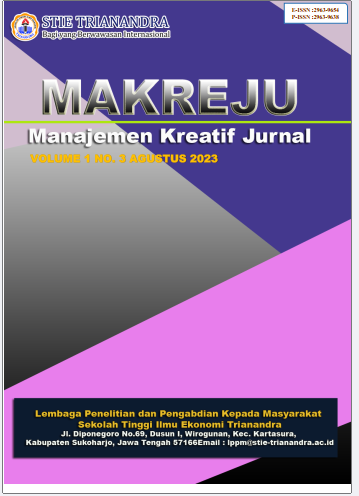Examining the Impact of Bloom's Taxonomy Integration in Entrepreneurship Education on the Competitiveness and Performance of Micro, Small, and Medium Enterprises (MSMEs)
DOI:
https://doi.org/10.55606/makreju.v1i3.2924Keywords:
Entrepreneurship Education, Bloom's Taxonomy Integration, MSMEs CompetitivenessAbstract
This book review examines the impact of integrating Bloom's Taxonomy into entrepreneurship education on the competitiveness and performance of Micro, Small, and Medium Enterprises (MSMEs). Through a comprehensive analysis of literature, empirical evidence, and expert opinions, the review highlights the significance of this pedagogical approach in fostering critical thinking, problem-solving, and innovation skills among entrepreneurship students. Empirical studies demonstrate improvements in students' competencies and learning outcomes following exposure to Bloom's Taxonomy-aligned curricula. Case studies, such as the Entrepreneurship Development Institute of India (EDII), provide evidence of the practical relevance of this approach in addressing challenges faced by MSMEs. Expert opinions underscore the importance of preparing students for the dynamic demands of the entrepreneurial ecosystem through curriculum designs that prioritize higher-order cognitive skills development. Overall, the review emphasizes the transformative potential of Bloom's Taxonomy integration in shaping the future of entrepreneurship education and enhancing the competitiveness of MSMEs in global markets.
References
Anderson, L. W., & Krathwohl, D. R. (Eds.). (2001). A taxonomy for learning, teaching, and assessing: A revision of Bloom's taxonomy of educational objectives. Longman.
Anisa Miranda, S. P. H. (2021). Strategi Internal Public Relations Dalam Meningkatkan Kinerja Karyawan. Jurnal Hubungan Masyarakat, Vol. 7 No., 390–393. https://karyailmiah.unisba.ac.id/index.php/humas/article/view/27224
Benardi, B., Chaidir, M., & Setyowati, A. (2021). Pengaruh Mata Pelajaran Kewirausahaan dan Lingkungan Pergaulan terhadap Motivasi Berwirausaha Siswa SMKS Al - Hamidiyah. Edukatif : Jurnal Ilmu Pendidikan, 3(6), 4881–4888. https://doi.org/10.31004/edukatif.v3i6.1376
Kasih, E., & Suganda., A. (1999). Pendidikan Tinggi Era Indonesia Baru. Jakarta:Grasindo.
Patricia, M. C. (2023). Sustainable Retail Financing in Turbulent and Difficult Market Conditions: A Dynamic Capability Perspective. Journal of Management and Entrepreneurship Research, 4(1), 17–29. https://doi.org/10.34001/jmer.2023.6.04.1-35
Ruslaini, R. (2021). Establishing Sustainable Practices on Micro, Small and Medium Enterprises (MSMEs) to Advance Indonesia’s Economic Growth]. SSRN Electronic Journal. https://doi.org/10.2139/ssrn.3787801
Ruslaini, R., Chaidir, M., & Permana, N. (2022). Implementasi Taksonomi Bloom Pada Mata Kuliah Kewirausahaan, Kompetensi Dosen Terhadap Niat Berwirausaha Mahasiswa. Refleksi Edukatika : Jurnal Ilmiah Kependidikan, 12(2), 207–214. https://doi.org/10.24176/re.v12i2.6819
Singh, A., & Jain, R. (2019). Integrating Bloom's Taxonomy in Entrepreneurship Education: A Case of EDII, India. International Journal of Entrepreneurial Behavior & Research, 25(7), 1447–1465. https://doi.org/10.1108/IJEBR-02-2019-0159
Smith, J., & Peters, M. (2020). Enhancing Entrepreneurial Competencies through Bloom’s Taxonomy: A Longitudinal Study. Journal of Small Business Education, 16(1), 35–51. https://doi.org/10.1108/JSBE-05-2019-0082
Yulianti, G., Chaidir, M., & Permana, N. (2022). The Influence of Entrepreneurship Education and Industrial Work Practices on Interest in Entrepreneurship in State Vocational High School Students in the Central Jakarta Region. Jurnal Ad’ministrare, 9(2), 729. https://doi.org/10.26858/ja.v9i2.42945








